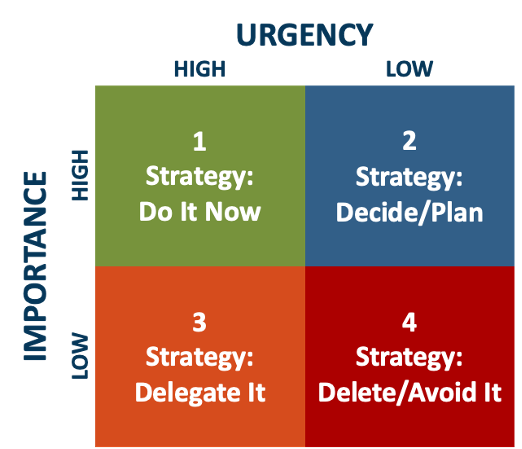In a recent ZipRecruiter report, 93% of employers want to hire candidates with soft skills.
But there is nothing soft about these skills. These essential skills—like communication, collaboration, and leadership—are essential for career success. A large body of research suggests essential skills can make a huge difference in an employee’s performance and promotability.
I’ve taught these skills for the last 30 years, and while not much has changed, there are timeless lessons to be learned and some evolution of the core concepts. In this series I’ll address both the timeless techniques as well as new aspects of essential skills that we all need to be successful as professionals.
We have more technology tools to manage our time than ever before (case in point: I currently use three devices every day for work), but we also have more competing priorities and demands for our time. Time is our most precious commodity—and, ironically, the more time we spend making money, the less time we have to enjoy it. The people I know that have plenty of time want more money and the people with plenty of money want more time. This is a balance we all must strike.
Timeless Techniques
The good news is, we’re in control of our time. Time management is a series of daily choices we each make on how we want to expend our energy. There are techniques we can use to work smarter and not harder. My favorite timeless technique is the Eisenhower Principle, a concept credited to former U.S. President Dwight D. Eisenhower who said in 1954, “I have two kinds of problems: the urgent and the important. The urgent are not important, and the important are never urgent.”
This helpful principle can be used to prioritize work today. You can put it into practice by using this 2x2 matrix to sort the tasks on your plate into one of the four quadrants:
- Necessities
- Proactive activities
- Interruptions
- Time wasters

In quadrant #4, list tasks that are low in importance and urgency. These are exhausting, low-value distractions that take your time and energy. You want to defer, delete, or dump these items.
In quadrant #3, list tasks that are low importance but urgent. You can delegate these items or ask a colleague for help.
Quadrant #2 is for items that are high on importance and low on urgency—for example, learning opportunities. These items need to get scheduled and planned—because what gets scheduled will get done.
Finally, quadrant #1 are the top priority items—activities that are both high importance and urgent.
The goal is to increase time in quadrant #1 and #2 while minimizing time in quadrant #3 and #4.
What’s New
Recently, I’ve recognized a trend in the time management classes that I teach. Working professionals are starting to realize that good time management is really a form of self-care. I believe newer generations entering the workforce have influenced this shift toward spending time in a way that is consistent with your values. They understand the importance of protecting and preserving their energy for the things they value. With previous generations, working long hours was often a sign of heroism and status, which potentially led to burn out. As a Harvard Business Review article by Tony Schwartz and Catherine McCarthy states, “The core problem with working longer hours is that time is a finite resource. Energy is a different story.”
We can all benefit from thinking of time management as energy management. Here are a few actions to help you get started with better use of your energy and time.
- Identify Rituals to Recharge and Renew: The core concept behind energy management is that you can renew your body and mind with daily rituals to help you recharge. Many professionals who work remotely don’t have the usual breaks in their day like commuting, walking to the sandwich shop, or chatting by the water cooler. These activities used to provide us mental breaks from work. Now you may need to strategically add these breaks to your day. Schedule time in your day to get some fresh air, take a device-free lunch break, or add physical activity to your routine. Other routines that may impact your energy include getting enough sleep, good nutrition, and unstructured time to think or connect with others.
- Set Boundaries with Others: For many of us, other people present the greatest challenge for spending time the way we want. Others may distract you, need your help, or suck up your time and emotional energy with little regard for your priorities and needs (aka “emotional vampires”). Recognizing these individuals and establishing healthy boundaries is step number one. Learning to say no, being honest about your capacity, or finding alternative methods to achieving outcomes are all reasonable strategies for setting boundaries.
- Use Time Blocks to Focus Your Mind: Technology has increased our ability to multitask—but that’s not always a good thing. Distractions can be exhausting and make you less productive and effective. It’s most efficient to focus on one task for 90-120 minutes. Scheduling time blocks on your calendar and setting your devices to “do not disturb” will allow you to focus your energy on accomplishing an important task. You can schedule another time block to check your emails, pings, and calls.
Final Thoughts
Don’t lose hope if you did not use your time the way you intended today. Tomorrow is another day. Remember, you’ll have a fresh 86,400 seconds to use tomorrow and each day into the future.

